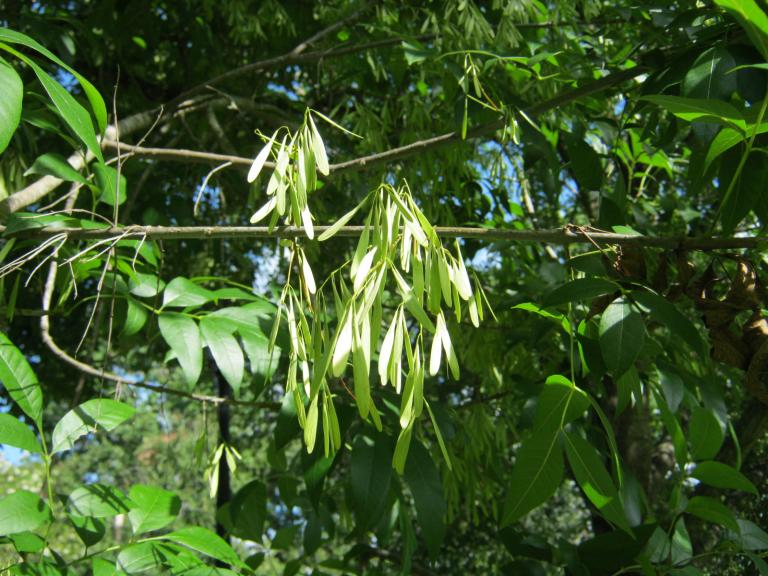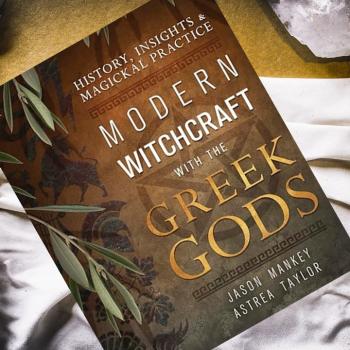I’ve just finished transcribing the Pagan Spirit Gathering press conference from last month regarding Dianic rituals and the inclusion of transgendered people, and it’s gotten my plant-loving-feminist-sociologist brain spinning. It was a fascinating discussion to listen to so closely, and it got me thinking about parallels between human sex/gender/sexuality and the sexual strategies of trees and other plants. In many ways, our friends in the green world are more like us than we think, and they can give us some important ideas for working our way through some of the current sex-and-gender-related controversies affecting the Pagan community.
One of the key points that Dianic priestess Ruth Barrett made during the press conference was a distinction between the “physicality” of being born female and experiencing one’s entire life through a female body, and the “different path” that transgendered women follow on their way to womanhood. Transgender activist Melissa Murry drew some important parallels between the work done by feminists of decades past and her own work today in re-claiming one’s body, life experiences, and sexuality as sacred. Both touched on a distinction between sex and gender, which is important in both feminist and queer theory, as well as in the social sciences: “sex” is biological, the physical reality that very nearly all of us are born with bodies that are clearly male or female, while “gender” is a social and cultural construct that has to do with how men and women are supposed to feel, look, and behave. Gender identity, as Ruth stated, is fluid–a person can feel that they are “really” male or female in ways that may or may not coincide with their physical body, or they may want to present themselves or behave in ways that may or may not coincide with what is expected of someone of their physical sex, and these feelings may change over time. Sex comes to us from evolution, as a useful reproductive strategy for complex life forms; gender is something that societies invent, and so can vary markedly across time, place, and cultures. One feminist theorist a couple of decades ago asserted that gender is a performance—it’s a show that we put on for society in our attempts to conform (or not!) to the gender roles that are considered acceptable for our biological sex. All of us demonstrate various levels of “masculinity” (i.e. traits that our culture associates with boys and men) and “femininity” (traits that our culture associates with girls and women) as we go about our lives. We all “do” gender performances, whether we’re aware of it or not; the question is to what extent those performances are authentic expressions of who we “really are” vs. the extent to which we’re just presenting ourselves in a particular way because that’s what society expects of us.
Sex and gender aren’t completely unrelated, though. If gender was indeed strictly a social construction, completely uninfluenced by biology, we could argue that trans-people wouldn’t exist at all; a person could decouple their sex from their gender and present themselves and behave however they wished without a desire to be seen as or to become the other biological sex. In reality, though, we have situations where one male-born identical twin can realize early in her childhood that she’s “really a girl” while her brother has a more typical male/masculine gender identity. Throw sexuality in, and you’ve complicated the mix even further. When I was working on my MA in women’s studies back in the early 90s, our gay-rights group was called the “Gay/Lesbian/Bisexual Alliance,” with the assumption that one was either gay/lesbian or straight or attracted to both sexes more or less equally. Today we generally speak of “GLBTQ” issues—and sometimes the acronym gets even longer when we try to be really inclusive—expressing a better recognition that sex, gender, and sexuality issues are tremendously tangled and complicated.
So what does all this mean for Pagans? For many of us, our practice and our theology (or thealogy, if you prefer) focus on the concepts of balance and reciprocity between opposites, especially male and female. This is particularly true in Wicca with its largely duotheistic God-and-Goddess focus—as a local Wiccan friend in his 50s with a very traditional form of practice told me recently, “If it doesn’t feed people or make babies, we’re not interested!” Many ancient Paganisms and Native/Indigenous belief systems have earth-and-sky motifs where one is perceived as male and the other as female, with the two joining to create life. Likewise, the sun is often perceived as male and the moon as female in ancient religious thought (although this isn’t always the case!), and the union of the two during solar eclipses is considered one of the great Mysteries.
But even so, we are nature-based religions, and we know that “natural” male and female social behavior in the animal kingdom is much more complicated than we used to think. Sometimes it isn’t directly related to finding food or making babies, and things often get more complicated the more social an animal species is. You’ve probably seen those great stories about “gay” penguins in zoos, and there are a host of other examples of “homosexual behavior” as forms of bonding or aggression in the animal kingdom. Animals that are mostly solitary, from bears to alligators, often have fiercely protective mothers and more or less “absentee” fathers. Male penguins, however—who live in extremely large groups—are fabulous dads, protecting their eggs and chicks from cold and predators by keeping them up on their feet and under their bellies. Female lions raise and protect their cubs collectively, and both male and female lions hunt and protect their offspring–although males may kill cubs fathered by rival males and females may go after the cubs of rival prides. In the primate world, our closest cousins (of both sexes) range from extremely aggressive to surprisingly peaceful to solving interpersonal problems through frequent and promiscuous sexual contact.
I think we can dig even deeper, though, and have a look at the plant kingdom as well for examples of diverse sexual behaviors and expressions in nature. Trees (and other plants) have three basic strategies for reproduction: they can be dioecious [dahy-ee’-shuhs], meaning individual trees are either male or female; monoecious [muh-nee’-shuhs], which means they have separate male and female flowers on the same tree; or cosexual/hermaphroditic, meaning that they have both male and female parts not only on the same tree, but also on the same flower. Flowers that contain both male and female parts are called “perfect” flowers, and flowers that contain all four reproductive organs (petals, sepels, stamens, and carpels/pistils) are called “complete” flowers. Also, plants can be wind-pollinated, insect-pollinated, or some combination of the two (you know that saying that taking a spoonful of local honey every day will help your allergies? Not if you’re allergic primarily to tree and grass pollen—those are spread by the wind, not bees).
So here are some examples. Ash trees are dioecious—here’s a happy male and female pair in Audubon Park in New Orleans:

Close up it’s easy to see that one tree is female—it’s loaded with “keys” that contain ripening seeds:

Its male neighbor, however, doesn’t have these keys:

By contrast, here are a couple of young baldcypress trees, also in New Orleans, at the front of Audubon Zoo just a few days ago. These trees are monoecious, so they don’t come in separate male and female individuals. In the winter, these trees would have dropped their needles (which is why they’re called “bald”—these trees are conifers, but they’re not evergreen) and would be loaded with male “catkins.” Right now, though, they’re in the middle of making big fat seed pods (much to the delight of local squirrels, who are experts at eating seasonally!) and look like this:

But have a look at how different the two individual trees are when you get closer. The tree on the left is absolutely loaded with seed pods:

While the tree on the right only has a few:

I’m not sure what accounts for this variation, but I’ve noticed it on a lot of baldcypress trees around here. Maybe it has something to do with age, or health, or genetics, or available light, but in any case, there’s certainly a lot of individual difference from tree to tree in this species, even though the trees themselves aren’t sexually differentiated.
Ok, now that we’ve figured out monoecious and dioecious, with some allowances for individual differences among trees of the same species, it’s time to get really complicated. As it turns out, there’s actually a lot of variation on this basic plant-sexuality theme, and around here swamp maples (aka red maples) are a good example. These trees are sort of dioecious, but, well, not always. The ratio of male-to-female flowers on any particular tree can vary considerably, with some individuals being mostly-male or mostly-female and others being very decidedly mixed up. This has led some researchers to declare swamp maples “polygamodioecious” or sometimes “polygamomonoecious.”

So it’s not just humans who have complicated sexualities (and, I would daresay, gender expressions). Other animals do too, and the plant kingdom has so much variation in reproductive strategies that it’ll make your head spin. The analogy isn’t perfect: humans are all one species, of course, and I’m making comparisons among a lot of different species of plants and animals here. And I want to be clear that I think we have to be VERY careful when we say that humans should live or believe a certain way because it’s “natural”—historically, those sorts of assertions have been used as a proxy for “the way God wants it,” and have been made to justify some pretty heinous social structures, like slavery, the “doctrine of discovery,” and keeping women barefoot and pregnant. And plants certainly don’t get socialized into expressing themselves in a certain sexed/gendered way, nor do they face harassment (or much worse) if they don’t—there’s no cultural component involved in how they grow and develop. I do think, though, that we can make a strong case that there is a wide variety of sexualities (and maybe even genders) in the rest of the natural world, just as there is in the human world. For nature-based religions, this is an important insight, and it can help us find our way around and through the difficulties of balancing the reality that life comes from the union of male and female with the reality that an awful lot of people have bodies, sexual orientations, and gender identities that don’t fit neatly into either/or categories.

















